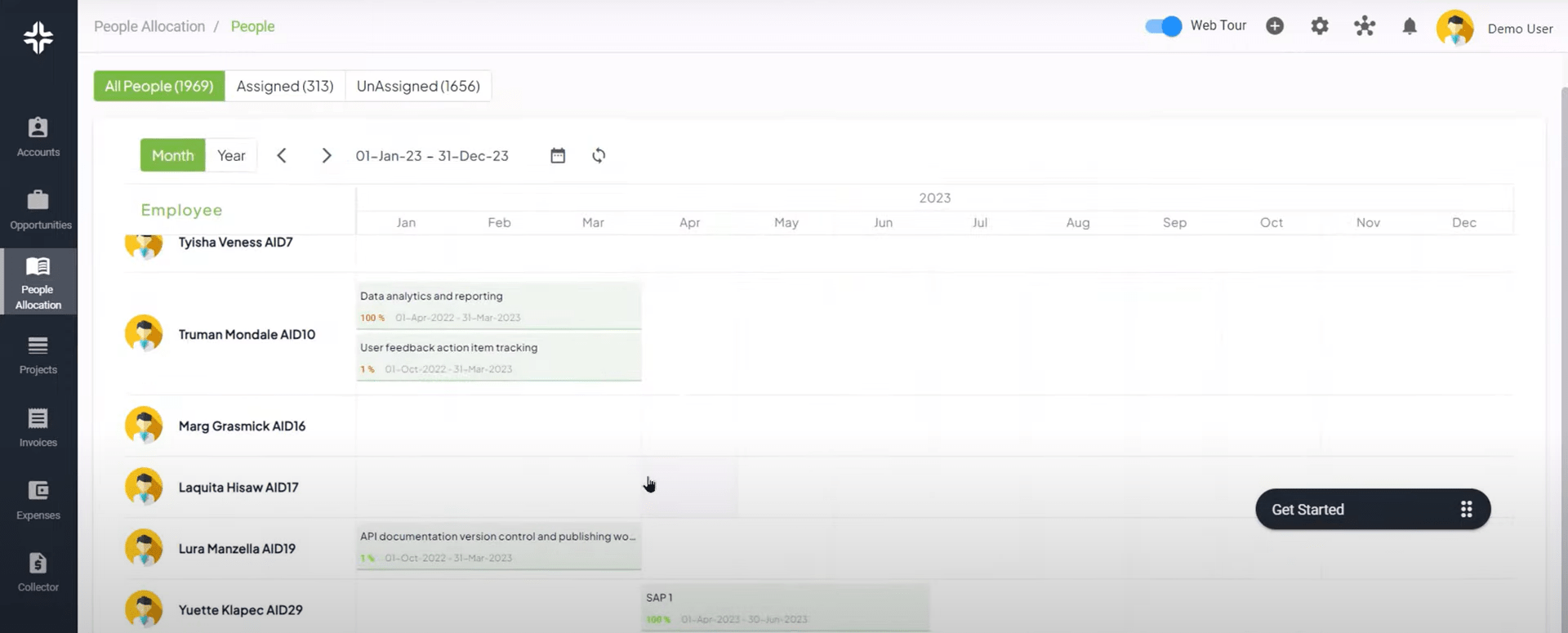Home » PSApedia
Automation Adoption Rate
Improve Your Business with High Automation Adoption Rates. Accelerate Success and Streamline Processes.

What is Automation Adoption Rate?
Automation Adoption Rate (AAR) is a metric that quantifies the extent to which automation technologies and processes are embraced within an organization. It shows how well a company uses automation, from basic tasks like managing timesheets to more complicated processes like handling deals.
The Automation Adoption Rate is a crucial indicator of a company’s efficiency and competitiveness in today’s fast-paced business landscape. By measuring the level of automation implementation, organizations can assess their ability to streamline operations, reduce costs, and improve overall productivity.
Importance of Automation Adoption Rate
In today’s competitive business landscape, automation is no longer a luxury but a necessity. A high AAR indicates:
- Efficiency: Automated processes, such as project management and ticket management, often lead to faster and more accurate results.
- Cost Savings: Automation can reduce labor costs and minimize errors, leading to significant savings.
- Competitive Advantage: Companies with a higher AAR are often better positioned to adapt to market changes, offering them a competitive edge.

Importance of Automation Adoption Rate
Calculating Automation Adoption Rate
Formula:
Automation Adoption Rate (AAR) = (Number of Processes Automated / Total Number of Processes) × 100
Example:
Let’s say a company has 50 processes, out of which 35 are automated.
Using the formula:
AAR=(35/50)×100=70%
This means 70% of the company’s processes are automated.
Automation Adoption Rate vs Other Metrics
While AAR is crucial, it’s essential to differentiate it from related metrics:
- Automation Efficiency Rate (AER): Measures the effectiveness of the automated processes. Just because a process is automated doesn’t mean it’s efficient.
- Technology Utilization Rate (TUR): Focuses on the extent to which available technology (like PSA software) is used, not just automation.
| Metric | Description | Use Case |
|---|---|---|
| Automation Adoption Rate | Measures the percentage of processes, tasks, or workflows within an organization that have been automated or are currently being automated. This metric indicates the extent to which automation technologies are being integrated into operations. | Useful for assessing the organization’s progress in adopting automation technologies and optimizing processes. It can help gauge the pace of digital transformation. |
| Return on Investment (ROI) | Measures the financial return generated by automation initiatives. It quantifies the benefits of automation in terms of cost savings, increased efficiency, and revenue generation compared to the costs of implementation. | Useful for evaluating the financial impact of automation projects and determining whether the investment in automation technologies is justified. |
| Efficiency Improvement | Measures the improvement in efficiency or productivity resulting from automation. It may include metrics such as reduced processing times, increased output, or decreased error rates due to automation. | Useful for quantifying the operational improvements gained from automation and demonstrating its impact on efficiency and productivity. |
Uses of Automation Adoption Rate
A higher rate indicates quicker uptake and reliance on automation for tasks ranging from simple to complex. Tracking this rate can offer insights into technological advancements, labor market shifts, efficiency improvements, and investment opportunities. It also highlights areas where workers may need retraining or where job displacements could occur. https://mostbet-games.net/ru/
AAR serves various purposes:
- Strategic Planning: Helps businesses identify areas that could benefit from automation, such as finance management.
- Performance Analysis: Companies can assess the impact of their automation efforts on overall performance.
- Resource Allocation: By understanding which processes are automated, companies can better allocate resources, using tools like resource management software.
Ready to Facilitate Automation Adoption?
KEBS plays a pivotal role in enhancing a company’s AAR:
- Comprehensive Tools: From Gantt charts for project planning to employee 360 for holistic employee views, KEBS offers a suite of tools that can be easily automated.
- Integration Capabilities: KEBS allows seamless integration with other business systems, ensuring that automation is smooth and cohesive.
- Training and Support: With resources like whitepapers and articles, KEBS ensures that businesses have the knowledge to maximize their automation efforts.

KEBS Gantt Charts
Ready to optimize your Automation Adoption Rate? Contact us today or book a demo to see how KEBS can transform your business operations.



